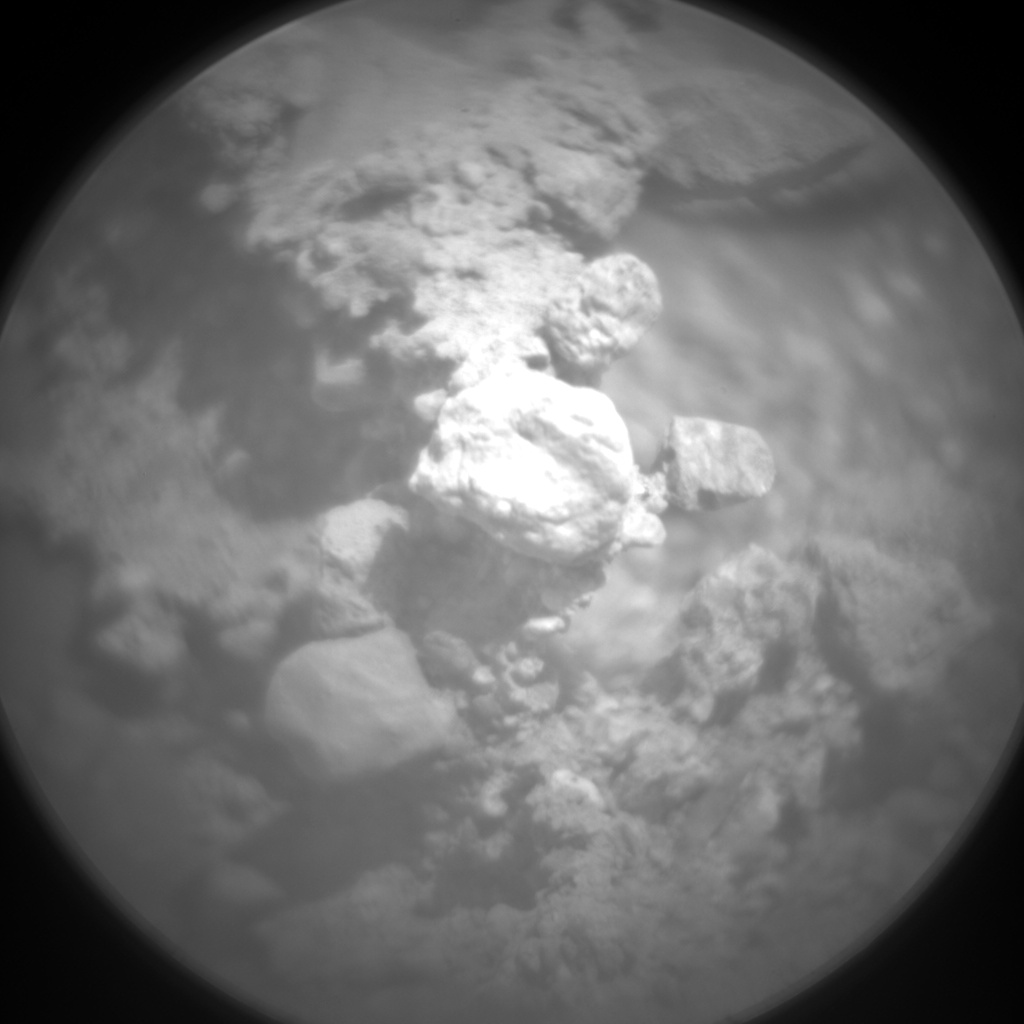Curiosity has completed a record drive on sol 371 with a single drive totalling 110m, the longest ever single distance drive in the mission. The reason for these long drives is because the
rover team can now see further than usual because of the nature of the terrain. This allows them to plan more ambitious drives.
Meanwhile the rover stumbled upon an interesting outcrop (sol 370) though that will not stop her from planning even longer drives as soon as possible.
 |
The new outcrop looks like it is made up
of course particles cemented together
just like the ones at Glenelg.
(NASA/JPL/MSSS) |
You can get a sense of the new terrain (which should be continuous with the top layers of rocks back in Glenelg) in this b/w navigational image taken on sol 371:
 |
| Sol 371 mosaic showing the extent of the new outcrop (NASA/JPL/MSSS/Abraham Samma) |
Judging from the images from the laser-camera combo instrument ChemCam, these rocks could be water related as you can see the rounded pebbles like in this ChemCam image taken on sol 370:
 |
ChemCam shot of a target within the outcrop.
The camera is designed to magnify laser target areas
millimetres across. Notice the rounded particulates
some held precariously by cementing material
like the one on the right of the centre
(NASA/JPL/LANL) |
The rounded surface of larger pebbles implies water and not wind (which can't easily transport and therefore smoothen larger pebbles) as the agent that eroded them while being transported in a stream.


No comments:
Post a Comment